
© Peter Hogan. (Click image for larger version)
www.carlosacosta.com
criticscircle.org.uk
I was at the recent Critics’ Circle lunch when Carlos Acosta won his latest award and was struck by Graham Watts citation – it seemed to splendidly sum up Carlos, both the man and his illustrious career… and why exactly we all admire him. I publish it in full here (lower down), but to set the scene I first give the Critics’ Circle press release. BM, Ed.
Press Release: 7 May 2019
Carlos Acosta CBE has been awarded the 2018 Critics’ Circle Award for Services to the Arts
Hailed as the greatest male dancer of his generation and, in many people’s eyes, one of the greatest dancers of all time, Carlos was presented with the award – an engraved crystal rose bowl – by Mark Shenton, President of the Critics Circle, at a celebration lunch at the National Liberal Club attended by critics from across all fields of the arts.
The annual award, the Critics Circle’s highest honour, was created in 1988 and the first person to receive it was Sir Peter Hall. There have only been two previous recipients from the field of Dance – Dame Alicia Markova in 2000 and Sir Matthew Bourne in 2016.
Chair of the Dance Section, Graham Watts, said Carlos had been a trailblazer all his career, and his achievements now included becoming the first person of colour to receive the Award for Services to the Arts. “I doubt that Carlos ever set out to be a trailblazer. But, in almost everything that he has done, Carlos – a man who is himself innately humble – has been a true pioneer.”
Carlos said he was overwhelmed to receive the award and he wished to thank the London critics for their part in supporting his career. “I am very humbled today.”
Born in Havana, the youngest of 11 children in an impoverished family, Carlos went on to train at the National Ballet School of Cuba, winning the prestigious Prix de Lausanne at the age of 16, before enjoying a celebrated 30-year career in dance with many of the world’s leading ballet companies. He was a Principal with the Royal Ballet for 17 years and danced all the major classical, and many contemporary roles, from Spartacus to Romeo. He is the greatest male dancer of his generation and, in many people’s eyes, one of the greatest dancers of all time. Carlos retired from classical ballet in 2016, after 28 years, and has recently been appointed as the new Director of Birmingham Royal Ballet. He will take up his appointment in January 2020.
The Critics Circle Award for Services to the Arts is voted for by more than 500 members of the Critics’ Circle across its six sections – Music, Dance, Film, Drama, Visual Arts and Literary criticism. Each section proposes a nominee from its field of the arts and then a final vote is held of all members.
Last year it was presented to the artist, David Hockney. Previous winners include Dame Maggie Smith, Sir Nicholas Hytner, Sir Richard Eyre, Dame Judi Dench, Dame Helen Mirren, Tom Stoppard, Alan Bennett, Ken Loach.and Stephen Sondheim.
The Critics’ Circle was founded in 1913 and is the oldest critics’ organisation in the world.
[ENDS]Carlos Acosta CBE – Graham Watts citation
President, Members of the Critics’ Circle, distinguished guests and, of course, our very special guest of honour….
It is my great privilege and honour, as Chair of the Dance Section, to introduce this year’s Annual Award for Outstanding Services to the Arts ….
…and in doing so I would like to acknowledge the support that I have received from Debra Craine, in preparing this citation
This is the second time in three years that a nominee from dance has achieved this accolade; after a prior hiatus of some sixteen years.
Having said this it would be churlish not to acknowledge that Carlos shares with that other dance recipient from two years’ ago – Sir Matthew Bourne – such richly varied artistry, transcending dance to such a degree, that our sector cannot claim exclusivity.
Indeed, it is a welcome sign of collaboration across the arts that critics from all other sections voted – in great numbers – for Carlos to receive this year’s award.
At the National Liberal Club, @GWDanceWriter reads his citation celebrating @CAcostaOfficial on receiving the @londoncritics Rosebowl Award pic.twitter.com/Y4DqqcJauE
— Mark Pullinger (@larkingrumple) May 7, 2019
His journey has been remarkable by any measure.
It has, of course, been thoroughly documented: in his own autobiography, No Way Home; and in the recent biopic, Yuli – his childhood nickname – based on that book, which integrates his tortured development as a dancer with a fascinating evocation of life in Castro’s Cuba.
Yuli is a supreme study of the creation of a true artist. If you haven’t yet seen it, and if I may turn film critic, just for a moment, I highly recommend it.
Most – perhaps all – of us will already know Carlos’s extraordinary story but it is essential to frame this award for his Outstanding Service to the Arts by referencing the brutal context to his early life since it means everything to Carlos’s subsequent development.
He was born in Havana, in June 1973. His parents, Pedro Acosta and Maria Quesada, had eleven children between them – mostly Carlos’s half-siblings – and he was the youngest. Carlos grew up, living with his parents and two elder sisters, Berta and Marilín, in Los Pinos, a neighbourhood in the suburbs of Havana, occupying that liminal space at the cusp of city and countryside.
Pedro’s mother was the daughter of slaves – going back some 350 years; his forebears were amongst 1 million slaves brought from Africa to Cuba. Pedro’s paternal grandparents produced sugar for the Acosta’s, a well-known Spanish landowning dynasty.
Carlos’s parents worked incredibly hard to provide for their family. Pedro – who was already 55 when Carlos was born – drove a lorry and Maria often travelled to the countryside to exchange soap, toothpaste or anything she could find so that they could have food.
In this way, they passed on to Carlos the value of hard work. But times became even more difficult: Maria suffered a stroke and Pedro went to gaol for two years, wrongly punished for a traffic accident caused by an inebriated motorcyclist.
During these times, Maria had to sell the refrigerator and the sewing machine which were the family’s most treasured possessions. Carlos once came home from school to find that his two pet rabbits had been cooked for dinner. Nobody should have to eat their pets, but he had to do that and I understand he hasn’t eaten rabbit since.
Despite spending his early life in these impoverished circumstances, these experiences gave Carlos a passion to do something about it; to succeed at all costs.
BUT, just not at ballet! He wanted to be the next Pele; or Michael Jackson.
Pedro was the catalyst that propelled Carlos towards ballet. His father imposed the art form on him, by any means possible. It was a way to get his wayward youngest child off the streets, providing him with discipline; but Pedro also saw the unique dance talent, even if for the first few years, his son hated the idea and ran away at any given opportunity!

© Foteini Christofilopoulou. (Click image for larger version)
Of course, the silver lining to growing up in Castro’s Cuba was that – although inequalities were rife – they did not present a barrier to accessing opportunity. And, with his father’s hand metaphorically pressed into the small of his back, Carlos entered the Cuban National Ballet School on 1 September 1982.
His first few years were fraught, epitomised by regular truancy and punishment. He was on the verge of dismissal, but his father kept fighting, vicariously seeking the chances for Carlos that he hadn’t had.
The last-chance saloon came, with Pedro begging for the first and last time in his life, when Carlos was transferred from Havana to a provincial boarding school in Pinar del Rio – at the western end of Cuba – and it was to be the first break from home, as he spent the next two years’ without seeing his family.
There is a turning point in every great career and Carlos’s epiphany came when his class were taken to see a performance at the Saidén Theatre in Pinar del Rio and he saw a male dancer – his name was Alberto Terrero – fly through the air, and to Carlos’s young eyes he seemed suspended for a full minute before landing.
As he progressed as a student, Carlos became aware of the impact his dancing had on others. He loved applause and he soon realised that he could make something of his life through ballet and that if he succeeded, he wouldn’t have to eat his pets anymore.
His extraordinary talent was soon recognised outside Cuba. In 1990, Carlos won the Gold Medal at ballet’s most prestigious pre-professional competition, The Prix de Lausanne, although apparently he didn’t realise that he had won until they put the medal around his neck; this was one of more than half-a-dozen major prizes that he won in ballet competitions around the world during his final years as a student.
Carlos performed for two years at English National Ballet before a bone splinter in his foot caused what almost became a permanent withdrawal from dance.
He returned to Cuba, then in the throes of desperate economic turmoil, and a mixture of insecurity, injury and homesickness set in. But, his teacher, Maestra Chery – still today teaching in her 80s – was instrumental in persuading him to return to dance; and, from 1993, Carlos was principal dancer with Houston Ballet, where he remained for five seasons, building a strong repertory in classical and neoclassical work.
In 1998, Carlos returned to London, beginning a seventeen-year association with The Royal Ballet, whilst also enjoying a career guesting with leading companies around the world, including American Ballet Theatre.
Like almost every dancer, Carlos doesn’t own up to having a favourite role.
However, he has great affection for the ballets of Sir Kenneth MacMillan, and was a revelation as Romeo, achieving something extra special in his partnership with Tamara Rojo as the star-cross’d lovers, despite never having considered himself as Romeo. He was, of course, the first black dancer to perform the role.
His performances as Crown Prince Rudolf in MacMillan’s Mayerling were also extra special. Carlos explained, in a recent interview, that he tried to paint himself white in order to get closer to the real Rudolf.
Other memorable performances came with the Bolshoi Ballet, dancing the title role in Yuri Grigorovich’s Spartacus, which alongside Mayerling presents one of the toughest physical challenges for any male dancer.

© Dave Morgan.
It wasn’t all plain sailing. After what he felt to be a particularly lacklustre performance as Prince Siegfried in Swan Lake, he asked to see the-then director of The Royal Ballet, Dame Monica Mason, and requested a year’s sabbatical so that he could regain his dancing mojo.
Knowing that this mid-season, mid-career dip is common in every dancer’s career, Mason responded the next day, by making sure that Carlos knew what the repertory was going to be over the coming year; having correctly guessed that it would present too many great opportunities for him to miss!
Carlos believes in the need to keep ballet fresh by continual renewal, renovating the repertoire and combining new work with what he describes as “ghosts of the past”. He is also on record as saying that ballet needs to embrace new technology and integrate with other visual arts, in order to bring classical ballet closer to today’s world.
He is keeping ballet relevant through his own company, Acosta Danza, which helped him celebrate thirty years’ in dance with sell-out performances at The Royal Albert Hall, last October. The company – which tours to the UK later this year – provides a professional platform for Cuban dancers, with a repertory that sits in the borders between modern and classical dance. In less than four years, it has achieved what many companies don’t achieve in ten.
Carlos has also opened his own dance academy, in Cuba, progressing his firm belief in free education, to discover all the talent that is out there, just as – with a strong impulse from his father – he himself had benefitted. It is a noble cause, now entering its third year, which Carlos is quick to acknowledge as impossible without the help of others, not least Aud Jebsen – a wonderful patron of the arts – who is here with us today.
It is appropriate that critics from sections other than dance should have been instrumental in Carlos receiving this award, because he is a polymath.
His autobiography, No Way Home, published in 2007, was followed by a first novel, Pig’s Foot, in 2013. And, although he has no pretensions to pursuing a long literary career, he is on record as saying that he feels that there is another novel to come.
Yuli is one of four films that Carlos has appeared in, beginning with a leading role in Natalie Portman’s section of New York, I Love You, back in 2008. With typical humility, Carlos is, however, quick to constrain the extent of his acting talents, stressing that these four films have just come his way, where he really only plays himself.
For many years, Carlos has also played the producer, entrepreneur and curator, beginning with his own ballet, Tocororo – A Cuban Tale, in 2004 – in many ways a forerunner to Yuli. This has been followed by regular “Carlos Acosta presents” shows at the Coliseum and Sadler’s Wells.
Carlos doesn’t consider himself to be a choreographer, but he has undertaken several choreographic projects since Tocororo. His 2013 production of Don Quixote for The Royal Ballet, with new choreography for the Gypsy scene in Act II, has just completed a successful revival at the Royal Opera House and tours to Japan, this summer.
His production of Carmen was premiered by The Royal Ballet in 2015 – with Carlos alternating the roles of Escamillo and Don José, although clearly much better suited to the former – and it has recently been performed by Acosta Danza; and, I think to much better effect.
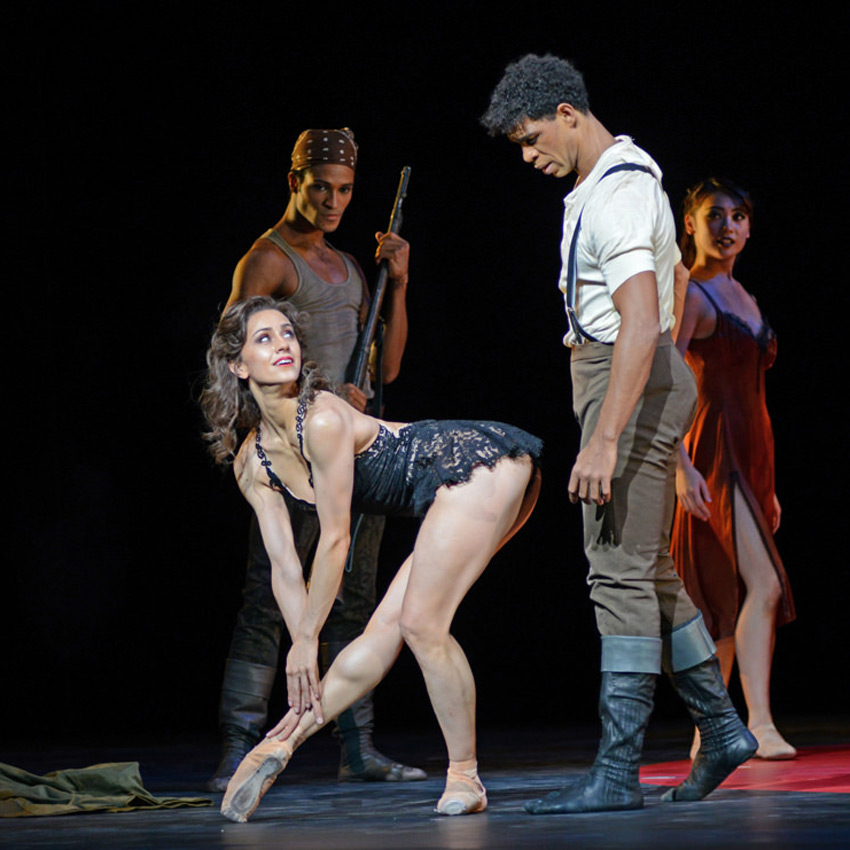
© Dave Morgan, courtesy the Royal Opera House. (Click image for larger version)
Whereas dance critics have generally always warmed to Carlos, the dancer, the first iteration of Carmen was not so well received.
As he told me in a recent interview, Carlos pays attention to critics and reads reviews. He said:
“They can give you really great advice. They might have seen Nureyev or whomever and they are seeing your performance in the rich context of so much else. I’m humble enough to know that I don’t know everything. I keep learning and…so, if I get a less than positive review my response is, right, thank you critics… Next time, I’ll do it better.”
At 45, Carlos was still dancing to a very high standard, when celebrating thirty years as a dancer, in October last year, delivering performances that would be a dream for many much younger men.
It is clear that dance remains addictive and he still loves the magical relationship with the audience. If his own dance journey still has some way to go, the mode of transport might be changing. He doesn’t have to wear tights anymore. He believes in projects that enable mature dancers to continue to connect with an audience, finding new vocabularies.
Carlos was appointed CBE in the 2014 New Year Honours; and, in that same year, he received the highest honour that the Dance Section can bestow, with the De Valois Award for Outstanding Achievement; just last November, Carlos received the prestigious Royal Academy of Dance Queen Elizabeth II Coronation Award, former winners of which have included Sir Frederick Ashton and Rudolf Nureyev.
In January 2020, Carlos’s unique journey will take yet another significant turn when he succeeds David Bintley as artistic director of Birmingham Royal Ballet; an appointment that I know is awaited with eager anticipation by everyone concerned with that marvellous company; the audiences in Birmingham and around the country, the Chief Executive, Caroline Miller – who is here today – and her staff, but most especially by the dancers themselves. What an exciting experience awaits them.
I doubt that Carlos ever set out to be a trailblazer. I don’t believe that his father ever wanted anything other than to ensure his talent reached its full potential.
But, in almost everything that he has done, Carlos – a man who is himself innately humble – has been a true pioneer.
And on that note, it is salutary to reflect on that fact that in the 30 years of this award, it has never before been won by a person of colour.
Irrespective of this astonishing fact, I would suggest that there has never been a more worthy recipient…
…Although, I also suspect that Carlos would say that an important part of this elegant Rosebowl belongs to his late father, Pedro!
It is now my great pleasure to call upon the Circle’s President, Mark Shenton, to present the award on our collective behalf.












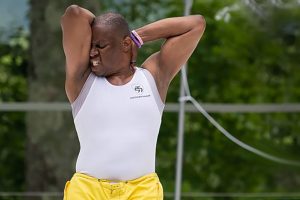
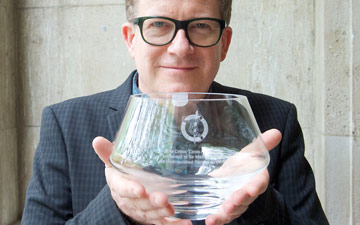
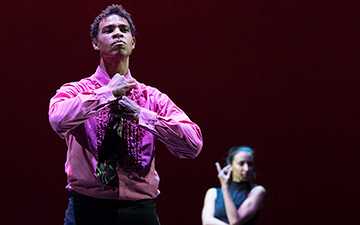
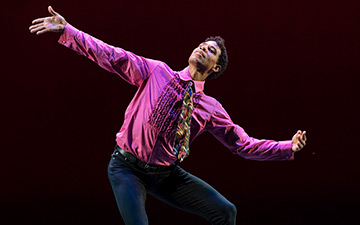
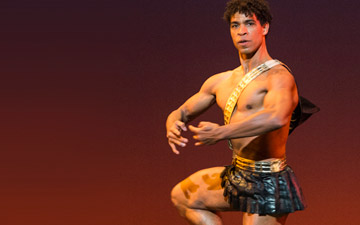

You must be logged in to post a comment.